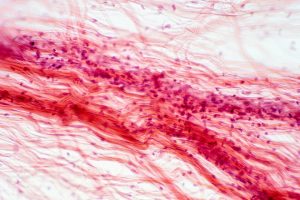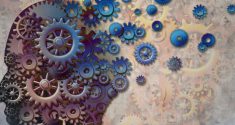Almost every organism on Earth follows a natural circadian rhythm encoded by your cells’ clock genes, which do exactly what their name suggests: they regulate your body’s rhythms on a 24-hour basis. Most cells in the mammalian body have cilia, hair-like structures that perform a variety of functions, such as movement in motile cilia and structural support in non-motile or primary cilia. Primary cilia also act as sensory organs for the cell, a function that has demonstrated the potential of primary cilia for the healing process and the different healing speeds of the body according to our circadian rhythm.
How Wound Healing Speed is Related to Cilia
Research shows that clock proteins, i.e., proteins that regulate the 24-hour rhythm in a cell and are encoded by clock genes, have a major influence on the regulation of primary cilia. Primary cilia respond to fluctuations in the expression of clock genes and can shorten or lengthen during the course of the day. The length of primary cilia can vary and is related to the healing process of a wound. The shorter the cilia, the shorter the wound healing time appears to be. Research conducted by scientists at Hiroshima University observed mouse cells over a period of 72 hours and found that the increase and decrease in cilia length corresponded to a 24-hour cycle.
“This suggests that the 24-hour cycle of primary cilia on fibroblasts is partly responsible for the difference in wound healing speed between day and night,” said Ryota Nakazato, researcher and author of the study. Fibroblasts are cells that contribute to the formation of connective tissue and play an important role in the healing process. The circadian rhythm in the primary cilia of these fibroblasts is more involved in wound healing during the day than at night.
The reason for this day-induced enhanced healing process appears to lie in the relationship between the 24-hour cycle and the length of the primary cilia. During the day, the cilia are shorter and can more easily transform into a cell type that can penetrate the wound to begin the healing process. Primary cilia may also be involved in receiving and transmitting signals to the rest of the body, which may also improve wound healing. Cells with shorter primary cilia detach more easily from their “anchorage” to begin cell migration to the wound site earlier and may also be able to send signals to accelerate wound healing more easily than cells with longer cilia.
Biological Clock and its Disruptions
The researchers believe that further analysis will clarify the role of primary cilia not only in wound healing, but also in various life phenomena with circadian rhythms, such as sleep/wakefulness, hormone release, and changes in body temperature. Although some progress has been made in linking these two seemingly unrelated topics, more work needs to be done to elucidate the mechanism by which the circadian rhythm influences the physiology of the body, especially in immature or embryonic cells. These observations allow researchers to further investigate the role of the biological clock and its disruptions in various health problems or disorders and may lead to the development of a field of research known as “circadian medicine.” Findings from more detailed studies of circadian rhythm physiology may help people suffering from jet lag, insomnia, and other disorders or diseases that may be related to problems with the regulation of the body’s natural clock.








